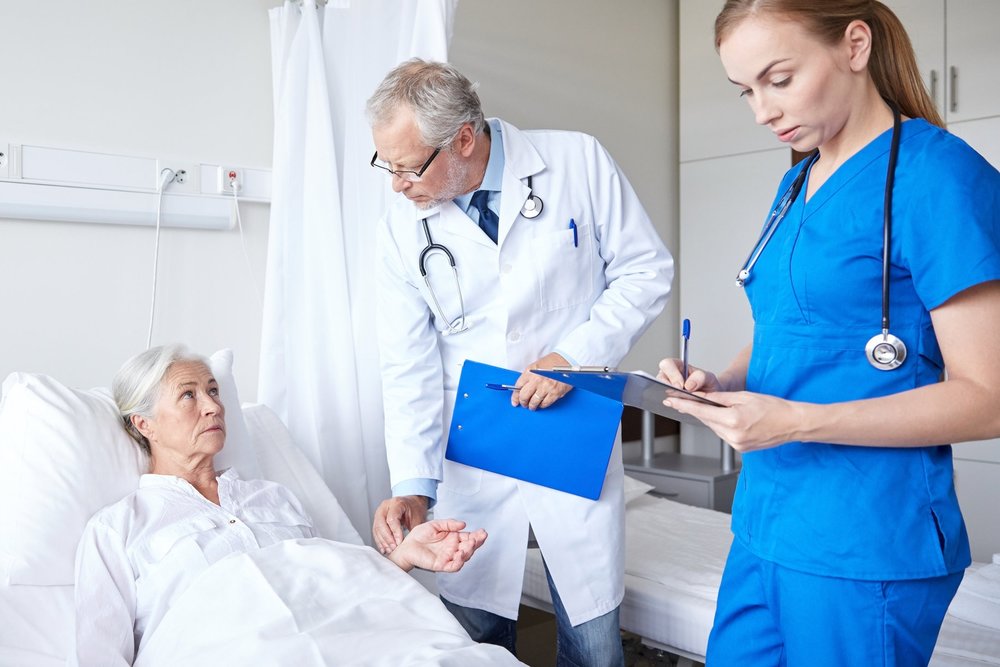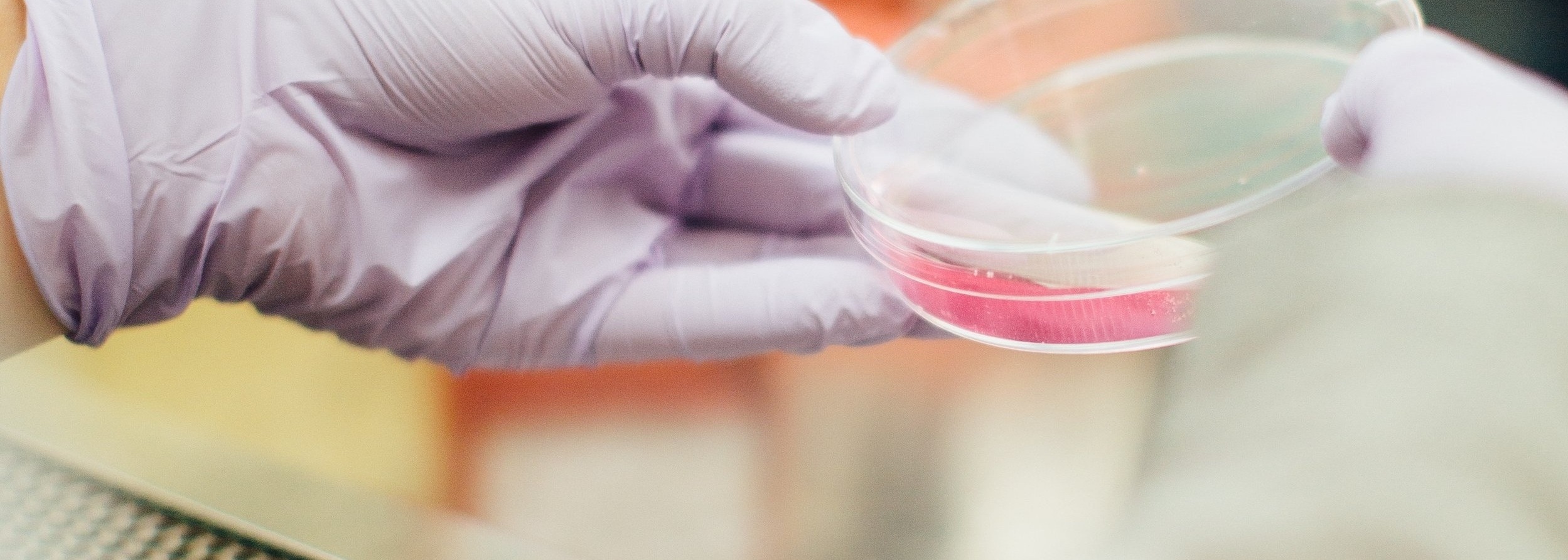Preventing Infection Outbreaks
is in Your Hands
A Guide to Reducing Harm and Eliminating Waste in Healthcare

A Hygiene Epidemic
The correlation between hand hygiene and infection rates in hospitals and nursing homes is well documented and widely accepted. At the same time, compliance rates among clinicians and other hospital employees is alarmingly low. In fact, the CDC reports that on average, healthcare providers clean their hands less than half of the times required. This performance is not intentional, but rather a function of manual systems, time constraints, and emergent situations.
Manual observation and secret shoppers have lead organizations to believe that compliance rates are 90%+, but automated tracking reveals percentages closer to 30-40%
Outdated reporting methods such as manual observation and secret shoppers have lead organizations to believe that compliance rates are 90%+, but automated tracking reveals percentages closer to 30-40%, creating risk for infection outbreaks. Because of traditional tracking methods, this critical issue tends to fly under the radar, stunting the ability for organizations to create a culture around hand hygiene compliance.
Hospital leaders across the country recognize an urgent need to close this compliance gap as the occurrence of common, preventable hospital acquired infections (HAIs), such as C. diff, MRSA, CAUTI, and CLABSI increases. In addition, emergent outbreaks, including the most recent to make headlines, coronavirus, and last year’s Candida Auris (C. auris), increase the urgency to act fast.


Less than 1/2
the average amount healthcare providers clean their hands as often as required, according to the CDC.

Understanding the Stakes
In today’s complex healthcare landscape, leaders are regularly choosing between endless executive priorities, particularly when it comes to adopting new technologies. While competing priorities around innovation, operational efficiency, and transformation are important to help meet the changing expectations of patients today, creating a safe and trusted environment should always rise to the top. But with 1.7 million hospital acquired infections (HAIs) reported each year and nearly 100,000 related deaths, it’s fair to say hand hygiene compliance is resulting in an epidemic.
This startling data not only indicates a threat to patient safety, but also for healthcare institutions seeking to gain or maintain Joint Commission accreditation.
Did you know?
As of January 1, 2018, any observation by surveyors of individual failure to perform hand hygiene in the process of direct patient care will be cited as a deficiency resulting in a Requirement for Improvement.

Hand hygiene is the #1 way to prevent the spread of hospital acquired infections.
Learn more about how an electronic hand hygiene monitoring solution can improve patient safety and reduce costs for your organization today.
What does it take?
"If you have to name the number one process or action a hospital can take to reduce infections, it's washing your hands. I'm excited about technologies today that can not only monitor hand hygiene, but effectively enforce improvement."

Leah Binder, President & CEO, The Leapfrog Group
You Can’t Fix What You Can’t Measure
Without an accurate tracking solution in place, lack of reliable data severely handicaps a hospital's ability to improve accountability and stop the spread of infections. Not to mention, reducing the cost and associated penalties of hospital-acquired infections.
One simple example is hand hygiene. On average, there are 100 hand hygiene opportunities per occupied patient room per day in a hospital, resulting in potentially millions of hygiene opportunities on an annual basis. At the same time, the state of the art has been manual peer observation, often resulting in no more than 100 observations on a monthly basis. As a result, hospitals are led to believe that hand hygiene rates are much better than reality.
Electronic hand hygiene monitoring is the industry’s new standard of excellence for hospitals and infection prevention teams to measure hand hygiene compliance. Hospital quality and safety rating organizations, including The Leapfrog Group are paying close attention to the impact these automated systems have on overall safety, in comparison to traditional, outdated manual methods.

Too Little Too Late: Is your Hospital Prepared for an Infection Outbreak?
When fast-spreading pathogens, such as measles, the flu, or the latest global health threat, coronavirus, make headlines, we all hope that hospitals are fully armed with the right tools to treat and prevent further harm. However, when an outbreak occurs, health systems often require extensive, short-term resources to maximize safety and facility preparedness.
At that point… is it too late?
In the instance of a health threat, is your organization prepared to take action? Investing in solutions that mitigate the implications of an unexpected event, such as coronavirus, should be a no-brainer, but is not commonly top of mind until it needs to be. This critical issue presents an opportunity for change. It’s never too late to explore the innovative solutions available, like SwipeSense, to automatically monitor and measure safety performance activities. Focusing efforts to remove hand hygiene or proper nurse rounding as weak links, reduces harm and impacts the overall patient experience.
Efficient Exposure Tracking: Save Time, Save Money, Save Lives
After identifying the source of infection, the World Health Organization recommends thorough contact tracing to determine contact exposure. ' Who came into contact with that patient? What rooms were exposed? Which pieces of hospital equipment were exposed? Are exposed individuals being monitored for symptoms?’
Exposure tracking is a necessary, yet often arduous process that results in tens or hundreds of hours of manual work to go through charts, retrace steps, track mobile equipment, all while actively working to contain and stop further spread to other staff and patients. During a typical shift, nurses are spending up to an hour during each shift searching for hospital equipment. With the added pressure of an infection outbreak, that time is too valuable to waste.
RTLS technology allows a hospital to virtually map and track all of the most important assets in a facility: its people and medical equipment. As data drives hospital executives’ objectives, imagine the powerful impact of millions of data points that can be tied to eliminating preventable medical errors, reducing costs, and improving patient experience.

“When dealing with an outbreak in the past, we spent more than 100 combined staff hours conducting electronic record chart trace backs to determine team members who entered a single room.
With real-time, room-level data from SwipeSense, we are able to run a report on the exposed room, quickly identifying who may have come into contact with a harmful organism. This is invaluable to Infection Preventionists.”
— Jamie Swift, System Director Infection Prevention, Ballad Health
Reducing Harm at the Point of Care: From our Blog
Learn about the ways to phase out harm, adopt an accurate, scalable solution that can drive positive change on behavior, patient outcomes, and your bottom line.

Transformation through Collaboration
Behavior modification is often cited as one of the biggest barriers to improving hand hygiene compliance. Clinicians and healthcare workers undoubtedly have their hands full during a shift. But the question remains, are their hands clean?
Implementing an electronic hand hygiene monitoring solution provides actionable insights that can be used to empower and create lasting change. Encouraging an organizational philosophy around how hand hygiene can cultivate a culture of safety is key, ensuring that your clinicians and hospitals workers feel motivated and accountable to improve hand hygiene compliance.
In order to quickly boost behavior change and build a culture of accountability, Novant Health’s Matthews Medical Center partnered with SwipeSense to launch a fun and competitive Compliance Improvement Initiative. Through a race track-themed program, they set a facility-wide goal to achieve 80% compliance in 80 days. Studies show that at the 80% marker, there is a higher ability to prevent infections. The initiative helped to drive fast and impressive improvement, while also producing excitement and energy to work together towards an important patient safety goal. Read the full impact story to learn how culture and collaboration contributed to their success.
Prevent Harm, Reduce Waste, Improve Outcomes
Ready to learn more about the SwipeSense platform and how leading hospitals across the country are realizing the benefits of investing in innovation to eliminate waste, reduce costs, and improve outcomes?
Request a customize ROI and cost-savings analysis to see how SwipeSense can offer your organization the most affordable, room-accurate, Real-time Locating System (RTLS), that powers electronic Hand Hygiene monitoring, Asset Tracking, and Nursing Insights applications.


